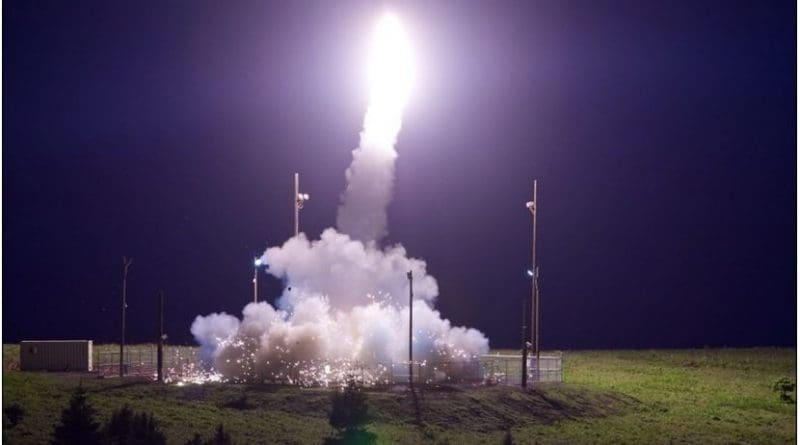US’ New Nuclear Posture: Over-Deterrence – OpEd
Two years ago, the UN General Assembly overwhelmingly voted for the adoption of the Treaty for the Prohibition of Nuclear Weapons, but that was before the onset of the Trump administration that, sadly, is not even rhetorically committed to disarmament and, instead, seeks a costly modernization of its nuclear arsenal, per the latest US Nuclear Posture Review Report.
Clearly, gone are the days of Barack Obama when, e.g, in his April 2009 speech in Parague President Obama highlighted the dangers of the 21st century and declared that to overcome those threats, the United States reaffirms its enduring commitment “to seek peace and security of a world without nuclear weapons;” three years later in Seoul, Obama reaffirmed US’s commitment for this lofty goal and highlighted the practical near-term steps the US was taking to move in that direction.
That was then, and now, we are witnessing a whole new US attitude that openly rationalizes its quest for new smart “tactical weapons,” ostensibly to deter the Russians who supposedly are not sufficiently scared enough of US’s big nukes, as well as a number of other non-nuclear contingencies, such as cyberattacks on the US, thus substantially lowering the bar for use of nuclear weapons. Over time, this will amount to new nails in the coffin of the (troubled) test ban treaty and the onset of a brand new, and highly dangerous for peace and planetary survival, chapter in nuclear arms race where it is increasingly fashionable to introduce the warfare-friendly small nukes in conventional theater. Also, it raises new questions about the US-Russia nuclear arms reductions agreements that have provided a modicum of stability in the nuclear arms race, in light of the US’s new, and more aggressive, nuclear posture that has been condemned by Moscow as a sign of Washington’s overt hostility.
One of the major flaws of this new report is that, much like the previous ones, it avoids the “no first-use” posture of countries such as China and India and, instead, relies on first-use capability as a deterrence, whereas a more globally-conscious approach would have recognized the sheer destabilizing ramifications of such an aggressive nuclear posture, one that contemplates use of nuclear weapons against non-nuclear adversaries (in violation of the UN Charter).
Another flaw is the noticeable absence of any concrete plan of action for a “world without nuclear weapons;” any such plan would entail the next steps for nuclear disarmament, including gradual involvement in reductions by all states possessing nuclear capabilities, prevention of placement of weapons in space, abandoning unilateral missile defense system plans, elimination of imbalances in conventional weapons, and entry into force of the Comprehensive Test-Ban Treaty (CTBT); the latter requires a positive reconsideration by the US Senate, which is nowadays crowded with hawkish Republican senators backing Trump’s nuclear modernization plan. The net result will be a new nuclear arms race between US and Russia and the elimination of the NEW START that has brought the nuclear stockpile of the two countries to their lowest level since the 1950s. As a corollary, a number of other US-Russia agreements, such as the 2011 Plutonium Management and Disposition Agreement have already been jeopardized.
Of course, none of this bodes well for the non-nuclear weapons states (NNWS), some of whom might feel an enhanced national security syndrome as a result of the proliferation of nuclear weapons and the lack of any tangible progress toward disarmament. At the ritual NPT review conferences, the NNWS states have focused on implementing the past NPT action plans on disarmament, moving forward with bilateral reductions, reducing the role of nuclear weapons in security doctrines, and negotiating a Fissile Material Cut-Off Treaty, i.e., all lofty objectives further and further removed from the realm of possibilities in today’s environment — that is bereft of any movement between US and Russia to pursue a future agreement with Russia for broad reductions in all categories of nuclear weapons. But, then again, as stated above, US has its eyes focused on a number of other adversaries as well, as reflected in the report’s statement: “The United States will enhance the flexibility and range of its tailored deterrence options… Expanding flexible U.S. nuclear options now, to include low-yield options, is important for the preservation of credible deterrence against regional aggression.”
Clearly, in a word, the biggest lacunae of the US’s nuclear posture is not that it is confrontational and addicted to nuclear weapons, but that it also is infected with an over-deterrence symptom that, logically speaking, can only sow the seeds of (regional) proliferation by countries threatened by the US.

